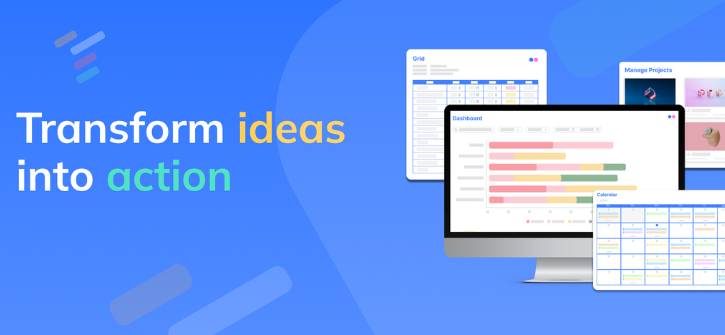Ever felt like project estimates are more of a guessing game than a science? You’re not alone. Traditional hour-based estimations can be a real headache in Agile environments. That’s where story points come in, offering a more flexible and team-centric approach. But what exactly are story points, and how do they differ from hours? Buckle up, ITC Group fam, because we’re about to break it down for you.
Story Points: A Measure of Effort, Not Time
Think of story points as a relative unit of effort required to complete a user story. It considers factors like complexity, uncertainty, and team knowledge. Unlike hours, which are a fixed unit of time, story points are flexible and can adapt to changing situations.
Here’s the key: 1 story point doesn’t necessarily equal 1 hour. It all depends on your team’s velocity, which is the average number of story points they complete in a sprint (a short development cycle in Agile). By tracking velocity, teams can estimate how many hours it might take to complete a given number of story points.
[Tip-1-in-content]
Hours: A Traditional Unit of Time
Hours are a well-understood and widely used unit of time measurement. In the context of project management, hours represent a specific amount of time allocated to a task or activity. It’s a traditional approach that’s been used for centuries.
Choosing Between Story Points and Hours: A Balancing Act
The decision to use story points or hours depends on various factors:
- Project type: For projects with well-defined tasks and predictable timelines, hours might be suitable. However, for projects with uncertain requirements or frequent changes, story points offer more flexibility.
- Team maturity: Teams with a strong understanding of Agile principles and experience with story points may find them more effective.
- Organizational culture: If your organization is deeply rooted in traditional project management methods, transitioning to story points might require a cultural shift.
Hours vs. Story Points: A Tale of Two Worlds
| Feature |
Hours |
Story Points |
| Focus |
Absolute Time |
Relative Effort |
| Estimation Method |
Individual |
Team-based |
| Flexibility |
Less Flexible |
More Flexible |
| Usefulness for Forecasting |
Limited |
Improved |
Why Story Points Are Your Agile Ally
There are several reasons why story points are a powerful tool for Agile teams:
- Focus on effort, not time: Story points encourage teams to focus on the relative difficulty of a task, rather than pressuring them to meet arbitrary deadlines.
- Team-based estimation: Story points are estimated collaboratively by the entire team, fostering ownership and shared understanding.
- Improved forecasting: By tracking velocity over time, you can get a better picture of how much work your team can realistically complete in a sprint.
- Flexibility: Story points can be adjusted as the team learns more about a task, allowing for course correction without derailing the project.
[Tip-2-in-content]
Practical Example: Let’s Get Estimating!
Imagine your team is tasked with developing a new login feature for your application. Here’s how story points might play out:
- Initial estimation: The team assigns 3 story points to the login feature. This represents the collective effort they anticipate it will take.
- Sprint progress: The team encounters an unexpected technical challenge during the sprint. They re-estimate the task at 5 story points to reflect the increased effort.
- Velocity at work: By the end of the sprint, the team completes 20 story points worth of work, including the login feature (adjusted to 5 points). This helps them forecast future sprints more accurately.
[Tip-3-in-content]
Related: How to run an effective Daily Scrum Meeting?
Key Challenges Facing When Estimating Story Points
Before we get into the main challenges, let’s review the main factors affecting story point estimates
Team experience: A team with more experience in a particular domain may be able to estimate tasks more accurately.
Task complexity: More complex Tasks, that require specialized skills, or have high uncertainty may have higher story point values.
Dependencies: Tasks that depend on other tasks may have higher story point values due to potential risks and delays.
Risk: Tasks with higher perceived risks may also have higher story point values.
While story points offer many benefits, there are also challenges to consider:
- Subjectivity: Estimating story points can be subjective, as different team members may have varying perceptions of effort. To mitigate this, use techniques like planning poker or affinity estimation. Example: A team is estimating a new feature. Some members believe it’s a simple task worth 1 story point, while others estimate it at 3 story points. This disagreement can lead to inaccurate estimates and difficulties in planning.
- Lack of historical data: For new teams or projects, there might be limited historical data on velocity, making it difficult to estimate story points accurately. Over time, as the team accumulates data, estimates will become more reliable. Example: A newly formed team is starting its first project. They have no previous data on their velocity, making it challenging to determine how many story points they can realistically complete in a sprint. This can lead to underestimation or overestimation.
- Changing scope: If project requirements change significantly, story points may need to be re-estimated, which can disrupt the planning process. However, this is also true for hour-based estimates. Example: A project is initially estimated at 50 story points. However, halfway through the sprint, a major feature is added. The team needs to re-estimate the project, potentially delaying the planned work or requiring adjustments to the sprint backlog.
- Resistance to change: Some team members may resist the shift from hours to story points, especially if they are used to traditional project management methods. Effective communication and training can help overcome this resistance. Example: A team that has been using hours for years is transitioning to story points. Some members may be skeptical about the new approach, believing that hours are more accurate and reliable. This resistance can hinder the adoption of story points and impact team morale.
Conclusion: Embrace the Power of Story Points
Transitioning from hours to story points can be a game-changer for Agile teams. By focusing on effort and fostering collaboration, bettering project management, you get more realistic estimates, improve your forecasting, and ultimately, deliver projects on time and within budget.
How ITC Group Can Help You Master Story Points:
At ITC Group, we understand the importance of effective estimation in Agile projects. We offer a range of services to help you:
- Agile training: Learn the ins and outs of Agile methodologies, including story-pointing techniques.
- Team-building workshops: Foster collaboration and shared understanding within your development team.
- Project management support: We can help you implement Agile practices that leverage story points effectively.
Ready to unlock the true potential of Agile? Let ITC Group be your guide. We’ll equip you with the knowledge and tools to navigate the Agile world with confidence. Remember, successful projects are built on solid foundations, and story points are a key ingredient in your Agile recipe.








